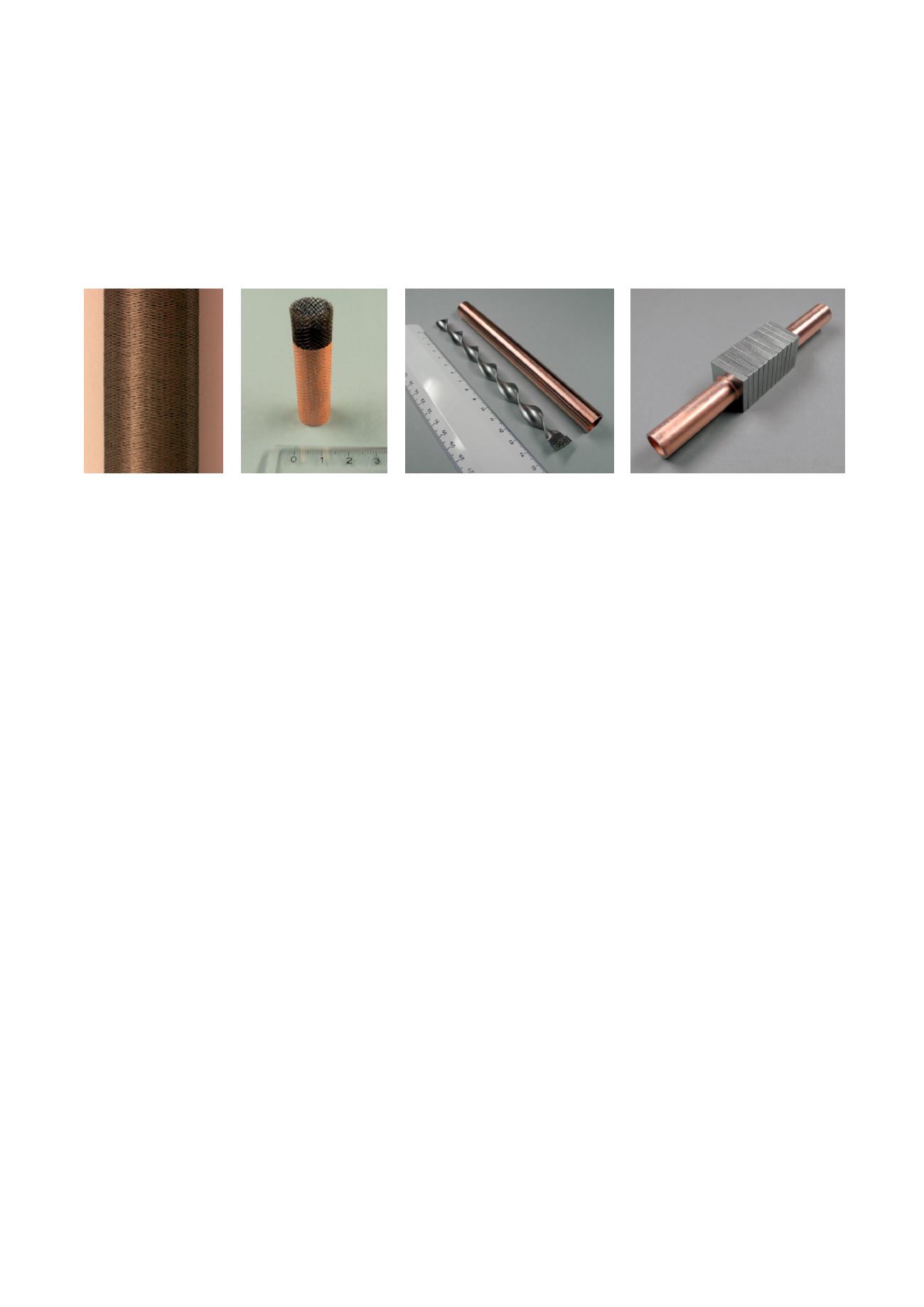

209
Plasma Material Interaction
Properties and optimisation of materials facing high temperature plasmas
■
The highlight for the Plasma Material Interaction Group in 2017 was the manufacture and
successful testing of a high heat flux component with tungsten fibre-reinforced copper tube
as cooling channel.
Tungsten Fibre-Reinforced Copper Tubes for High Temperature Applications
The highlight for the Plasma Material Interaction Group
in 2017 was the manufacture of a high heat flux (HHF)
component mock-up equipped with a tungsten fibre-
reinforced copper (W
f
-Cu) tube as cooling structure and its
successful testing in the HHF test facility GLADIS.
A major challenge in view of the design of a magnetic
confinement nuclear fusion demonstration power plant
(DEMO) is the reliable exhaust of power and particles. In
such a reactor, highly loaded plasma facing components
(PFCs) have to withstand severe particle and heat flux
as well as considerable neutron irradiation. Existing
PFC designs are based on monolithic tungsten (W) and
copper (Cu) materials. Such an approach, however,
bears engineering difficulties as W and Cu are materials
with inherently different thermo-mechanical properties
and their preferred operating temperature windows do
not overlap. Against this background, W-Cu composite
materials are promising candidates regarding the appli-
cation to the cooling structure of highly loaded PFCs. The
W
f
-Cu composite had been developed during the previous
year (see Annual Report 2016) as a material that provides
enhanced high-temperature strength for use at elevated
temperatures (> 300 °C). Cylindrical W fibre preforms
were braided using fibres with a nominal diameter of
50 µm. In order to fill the whole width of the tube wall
with reinforcing W fibres multi-layered preforms with
17 plies were manufactured by means of mandrel over-
braiding. They were manufactured (in collaboration with
ITV Denkendorf) in such a way (high braiding angle, see
Fig. X1 left) that the thermomechanical properties in hoop
direction of the tube are optimised. Finally, the composite
material is manufactured by centrifugally melt infiltrating
Cu into the fibrous W preform. Simulations based on
homogenisation of a representative volume element
(RVE) as well as experiments confirm that the mechanical
performance at 300 °C is enhanced by more than a factor
of two compared to state-of-the-art Cu alloys already
at a fibre volume fraction of 0.2. W armour monoblocks
were joined to the W
f
-Cu tube (in collaboration with ENEA
Frascati) and a twisted swirl tape was inserted into the
tube in order to enhance the heat transfer to the coolant.
The actively water-cooled component (Fig. X1 right) was
subjected to cyclic high heat flux tests in the GLADIS ion
beam facility surviving 300 pulses at 20 MW/m
2
for 10 s
(the time to reach thermal equilibrium is about 5 s) under
DEMO relevant conditions (water inlet temperature 130 °C,
pressure 4 MPa). With these very successful tests the
component qualified for the next round of experiments
which are supported by the European fusion consortium
‘EUROfusion’.
Project
■■
Supported by EUROfusion (2017)
Fig. X1: Tungsten fibre reinforced copper (W
f
-Cu) tube as cooling channel of a high heat flux (HHF) component. From left to right: W
f
preform, Cu-infiltrated
W
f
preform, W
f
-Cu tube with swirl tape insert, complete component with W monoblock armour.



















